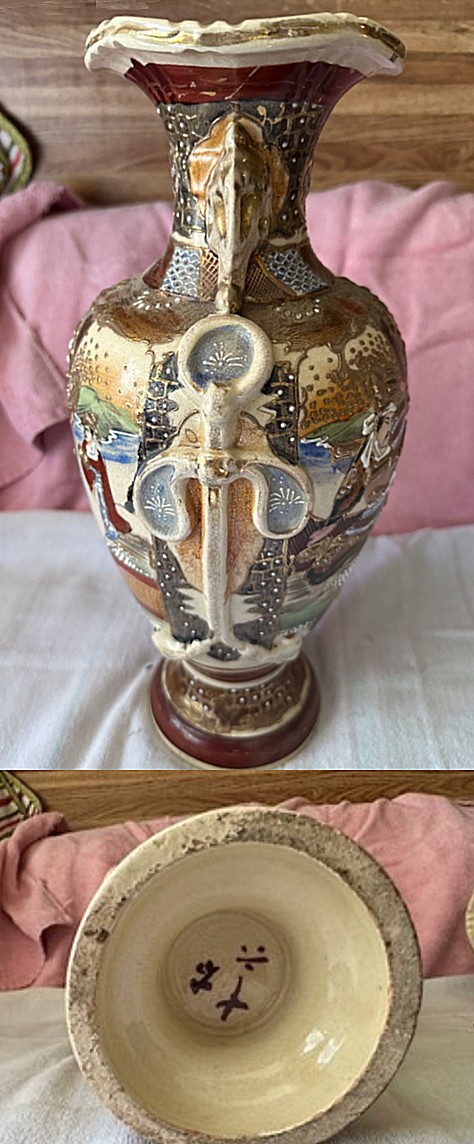
Kyoto Satsuma Japanese export ceramics
"Kyo-Satsuma" or as it is more often referred to "Kyoto Satsuma" is a type of Japanese export ceramic that features a stoneware body and is often decorated with raised enamels, known as moriage. The term "Satsuma" originally referred to earthenware ceramics made in the Satsuma region (Han) of Japan, but over time, the term expanded to include similar wares produced in other regions, such as Kyoto, but with a different body.
Kyoto Satsuma wares were primarily produced during the Meiji period (1868-1912), especially in the latter half of the 19th century and early 20th century. This was a time when Japan opened up to the West after more than two centuries of self-imposed isolation. The Meiji era saw a surge in demand for Japanese arts and crafts in the West, and Kyoto, with its rich history of ceramic production, became one of the centers for producing export wares to meet this demand.
While the body of Kyoto Satsuma might appear similar to traditional Satsuma, the decoration differs. Kyoto artisans were known for their intricate and colorful designs, often incorporating gold and multiple colors, as well as the raised moriage technique. The pieces were often more ornate and vibrant than the more muted, traditional Satsuma wares.
In summary, Kyoto Satsuma ceramics were primarily produced during the Meiji period, especially from the late 19th century to the early 20th century. Occasionally family history suggests a date to the 1920-30s.
Marks on the base are usually product or trade related and might be a Japanese number and sometimes a character that indicate a direction like "right", which we usually understand of as the suggested placement of a pair.
A